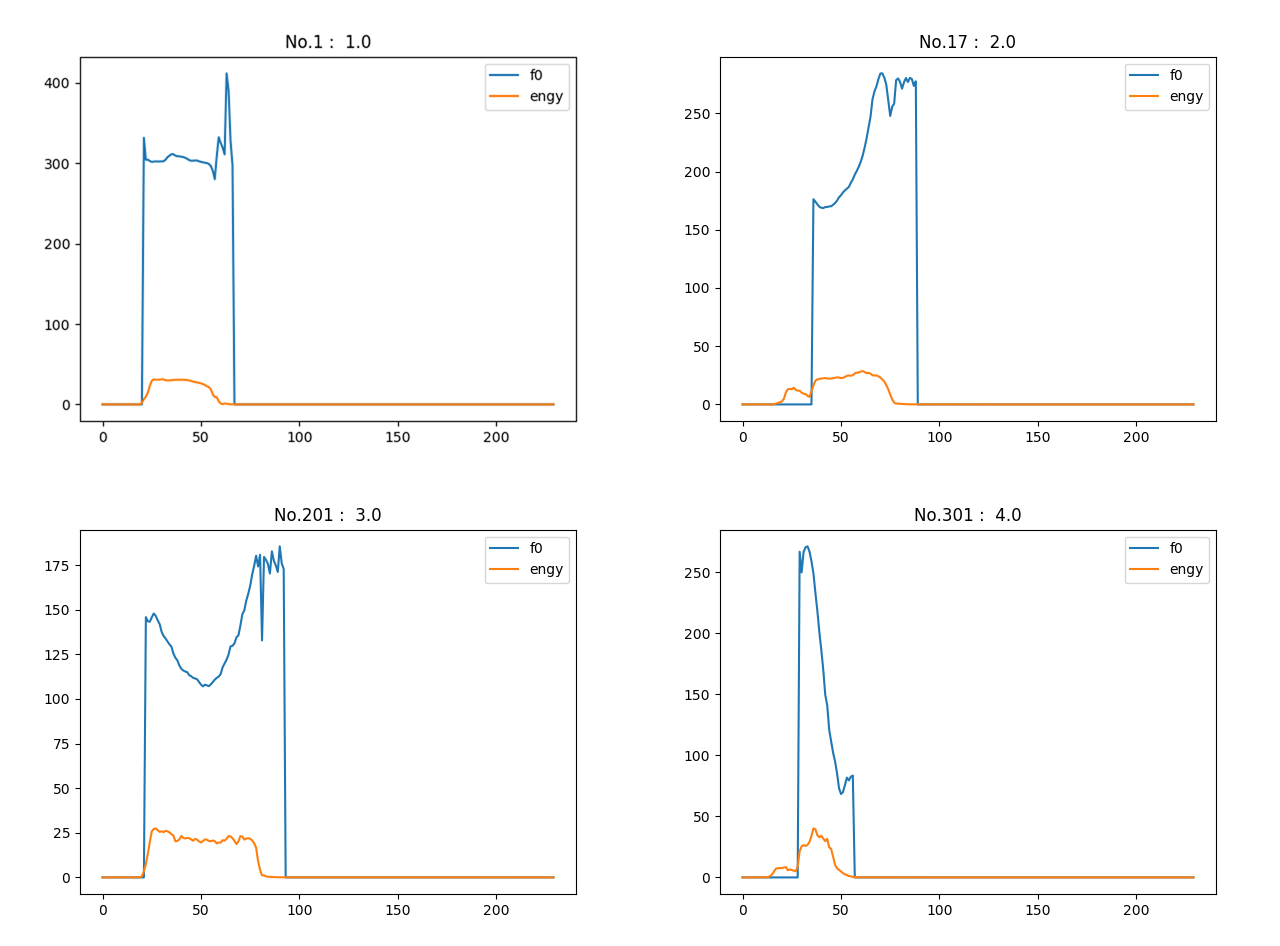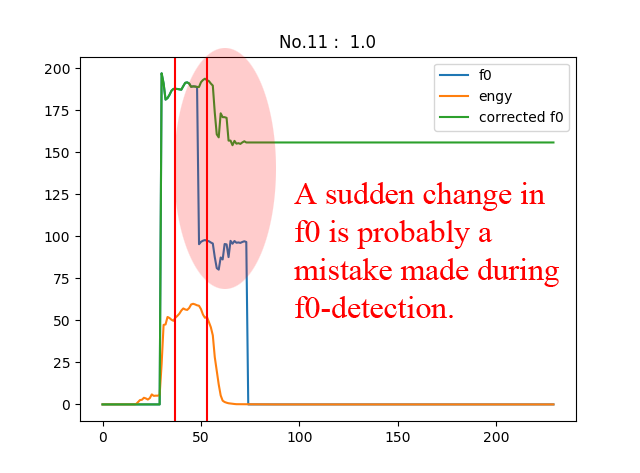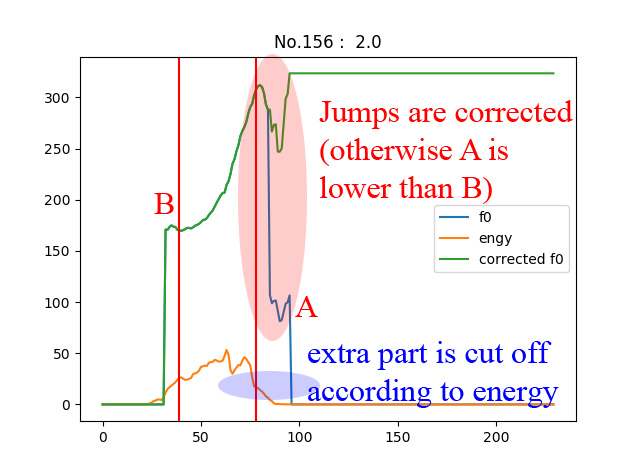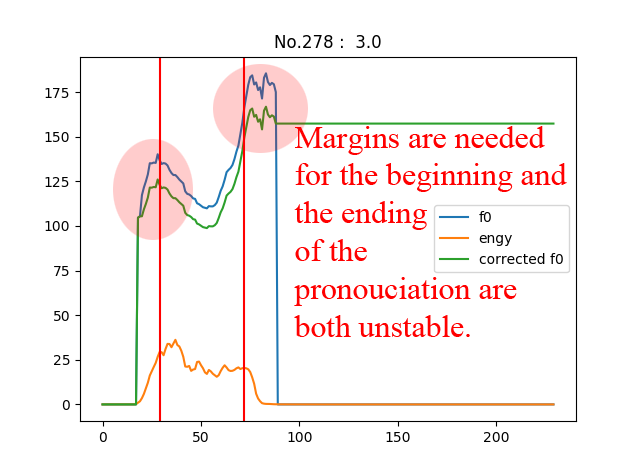littleRound lxy9843@sjtu.edu.cn Speechlab-xyl98
[TOC]
Classify tones of single Chinese characters (different characters in different cases) by their f0/engy sequences.
https://www.kaggle.com/c/speechlab-tone-classification
train/ - training data
dev/ - validation data
test/ - difficult test data
Each dir includes the f0 and engery features extracted from corresponding wav files. Each wav file is the pronunciation of a single Chinese character.
Note that the length of different wav file may be different. Hence, the f0/engy files corresponding to different character may also have different length. But for the same character, the f0 file will have exactly the same length as the engy file.
The naming convention for subdir and file name is as below:
subdir name indicates the correct tone.
filename pattern is
{pron}{tone_lable}.f0 {pron}{tone_lable}.engy
where pron is the pronunciation of the character and tone_lable is the tone of that character, i.e. 1, 2, 3 or 4.
Please design a tone classifer with the f0/engy file as the input and output the tone label.
Notice: values have been scaled and have different units.
- [1 day] Naive fully-connected network
- Accuracy < 50%
- [3 days] CNN (with difference sequence)
- Accuracy 60% - 70%
- [4 days] fine-tuned 1D-CNN with some simple tricks
- Accuracy 82% - 90%
- 1st in LeaderBoard for less than 1 day
- [1 day] Manual annotation (a bit cheating, discarded at last)
- Accuracy 91% - 94%
- Validate my assumptions (intuitions)
- Two submissions to find out my best (94%)
- [2 days] fine-tuned Rule-based classifier with a few tricks
- Accuracy 99.122% (100% on dev)
- Use my assumptions validated before (no label used)
- 1st in LeaderBoard at last
- The shape of the f0 sequence determines the tone.
- Only a short sequence is valid in the classification. (Or is enough to indicate the tone.)
- There are flaws in f0-detection causing jumps in sequence.
- It's hard to distinguish
TONE 1directly, but the case is relativily easier for the rest three.
- [
findValidRange]: [f0_th] [cut] [engy_th] - [
stupidJudge]: [up_thres] [down_thres] [turn_thres]
-
Preprocess
- (Trivial) Scale engy to make life easier.
- [
findValidRange] Find valid duration of time for tone-classfication.- If the sequence start with
f0 < [f0_th], say[f0_th] = 1, then in this period of time f0-detection is not working. The data is invalid. - If the sequence start with
engy < [engy_th], then in this peroid of time there's hardly any sound. The data is invalid. - Some unexpected detection result may occur at both the beginning and ending of the pronunciation. We'd better cut them off.
- If the sequence start with
correct_jumpCorrect mistakes made in f0-detection.- If a sudden jump occured in f0 sequence (
f0[i+1] / f0[i] > [threshold]) , scale all f0 after that point so thatf0[i] = f0[i+1].- Reasonable because we only care about the trend0 of f0, not actual value.
- If a sudden jump occured in f0 sequence (
-
[
stupidJudge] Classfication- Only use corrected f0 sequence in valid range.
- Set $ m := min(f0_sequence) $ .
- If
f0[begin]/m > 1 + [turn_thres]andf0[end]/m > 1 + [turn_thres]- return
TONE 3
- return
- If
f0[end]/f0[begin] > 1 + [up_thres]- return
TONE 2
- return
- If
f0[end]/f0[begin] < 1 + [down_thres]- return
TONE 4
- return
- If it is not the cases above
- return
TONE 1
- return
Every time after I updated my parameters, I run a script that outputs the accuracy rate along with specific detailed diagrams showing which case is predicted incorrectly in training set. After observing why mistakes happened I'm able to get the intuition needed for tunning all parameters or new method to process data.
(data.zip password hint: g****a) slides generated by pydown



